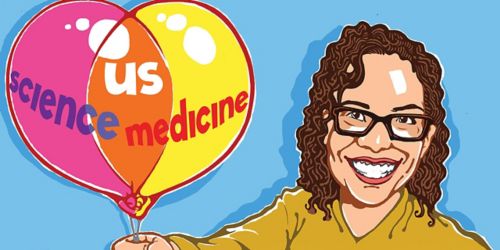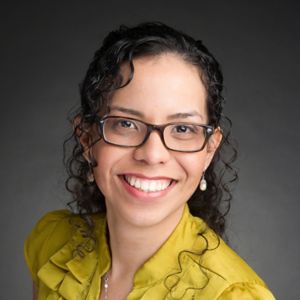St. Jude Family of Websites
Explore our cutting edge research, world-class patient care, career opportunities and more.
St. Jude Children's Research Hospital Home

- Fundraising
St. Jude Family of Websites
Explore our cutting edge research, world-class patient care, career opportunities and more.
St. Jude Children's Research Hospital Home

- Fundraising
Translational research: Finding the connection between what we do and who we help

Many times as a researcher, you don’t get to see how your work helps others. But volunteering to help patients has given Himy Muniz-Talavera an opportunity to see translational research in action – how her work helps others.
Translational research is where basic scientific research creates new therapies or clinical procedures. I chose St. Jude for my postdoctoral fellowship because of its translational research capacity, but also because the worlds of science and medicine connect in so many other ways.
I didn’t expect those worlds to collide in such a meaningful way for me on a Saturday afternoon this past November.
I work in the Developmental Neurobiology lab of Paul Northcott, PhD, where I study the oncogene KBTBD4. Oncogenes are genes that can potentially turn normal cells into cancerous tumor cells. Research from our lab has shown that KBTBD4 is associated with two of the four subgroups of medulloblastoma—the most common malignant pediatric brain tumor.
I’m a basic scientist with an interest in biomedical sciences, but I’ve never had the chance to work with patients. Dr. Northcott knew of my clinical interests, and encouraged me to spend time in the clinic to see how our research contributes to patient care. Once a week, I visit the St. Jude Neuro-oncology clinic to shadow Giles Robinson, MD, and clinical fellow Anthony Liu, MD, as they care for brain tumor patients. Many of these patients have medulloblastoma.
Translational research, where science and medicine intersect
This weekly visit—even if it’s just sitting in the back of the clinic room listening to patients talk about their lives — is a humbling opportunity that I wish more of my research colleagues could experience. Since I spend time in the clinic, I was encouraged to become certified as a volunteer medical interpreter. I’m from Puerto Rico, and there are many opportunities for me to speak with Spanish-speaking patients and families.
My first chance to serve officially came last November during the annual Day of Remembrance weekend at St. Jude. Day of Remembrance brings families of patients who have died the previous five years to campus. The event honors these children’s lives and offers comfort to families.
I began that Saturday helping Spanish-speaking families register for the event and assisting them with setting up the memory booths they created to honor their children. During a panel discussion that afternoon, I volunteered to help Wendy Avery, a bereaved parent mentor, translate Spanish questions that were sent via text message.
Listening to the parent and sibling stories was emotional. A sister talked about her late brother and how important science and research were in advancing knowledge in the field of cancer. A mother discussed her son who had died from medulloblastoma and how his tumor had been donated for research. She detailed how information was being gleaned from tumor samples and, as a result, new subgroups of medulloblastoma had been discovered. These findings could lead to the creation of more targeted therapies.
These families’ words hit home for me. They were referencing an international collaboration led by my lab — a study that appeared in the journal Nature. This analysis of medulloblastoma identified genomic changes responsible for more than 75 percent of the brain tumors in the study, including two new oncogenes: PRDM6 and KBTBD4.
I knew that our research had an impact in the clinic, but it was remarkable to hear these families discuss how in one way or another, I contributed. It’s humbling because I know that my work matters, and my lab’s work matters.
In the cafeteria during lunch, I met another family who was also from Puerto Rico. The mother and I discussed the importance of tumor samples in research. I described how samples are like gold nuggets. Every researcher who has a piece can address a research question. Together, we can obtain much more knowledge to help other kids in the future. We can’t come up with better therapies unless we better understand these tumors.
My experience that day was eye-opening. These families’ children may have lost their battles with cancer or other diseases, but they left with a better understanding of the importance of our work and how the collaboration between the lab and the clinic is the stepping stone to progress.
I left with something else that day as well—a profound, firsthand experience of how my work and my St. Jude colleagues’ efforts are intertwined.






